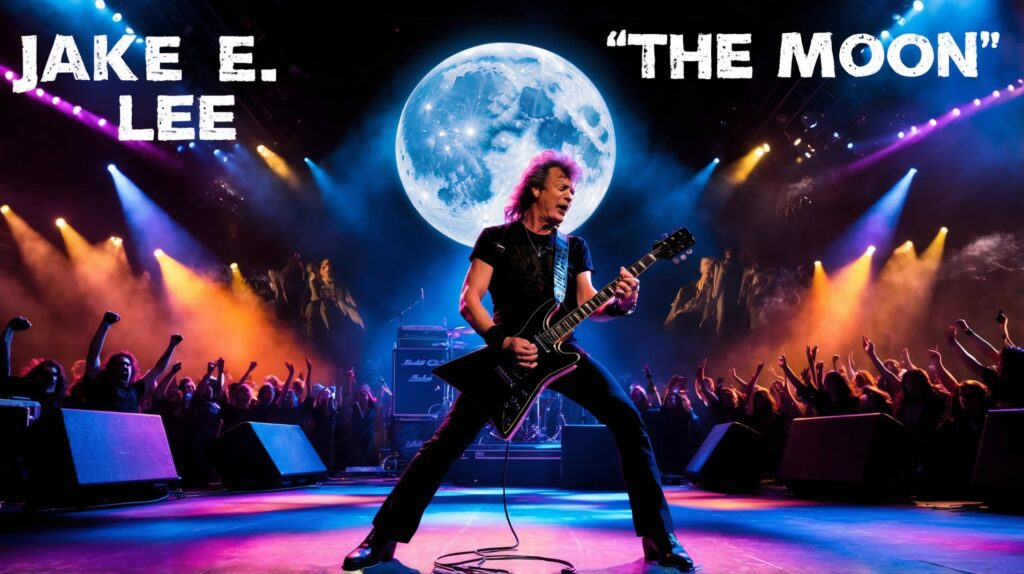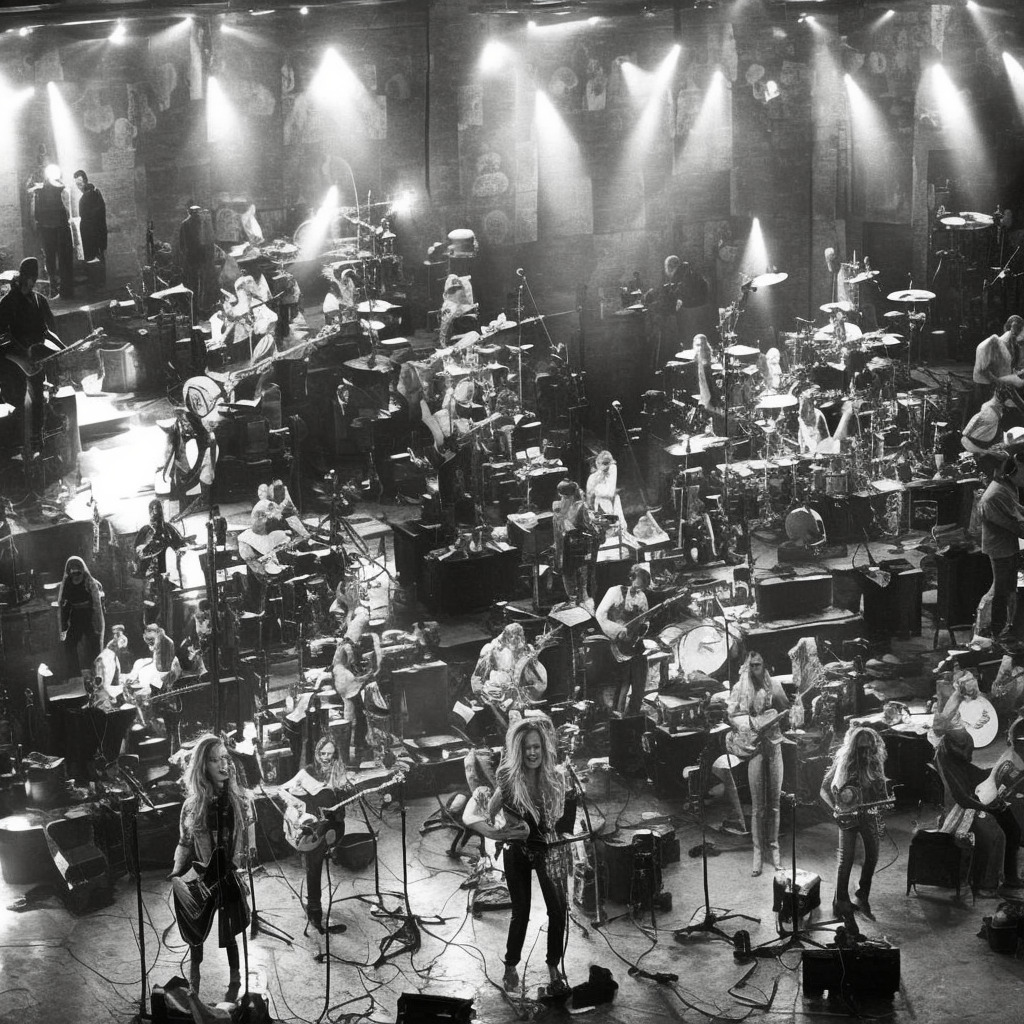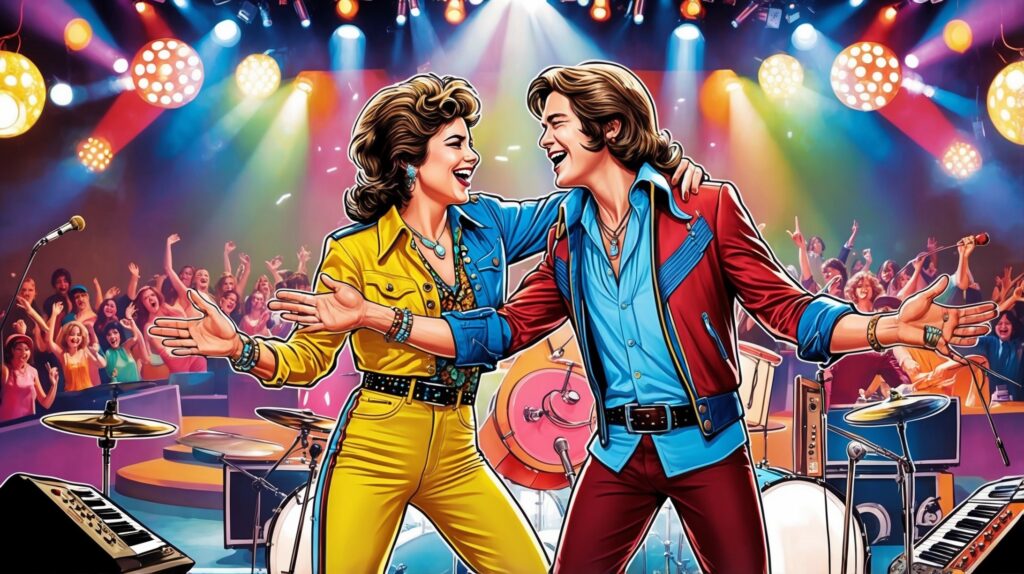A Musical Milestone Tied to Lunar Missions and Cultural Significance
Sinatra’s ‘Fly Me to the Moon’: a timeless musical milestone that transcended earth, capturing the essence of love and desire for adventure, whilst marking a cultural shift in American history.
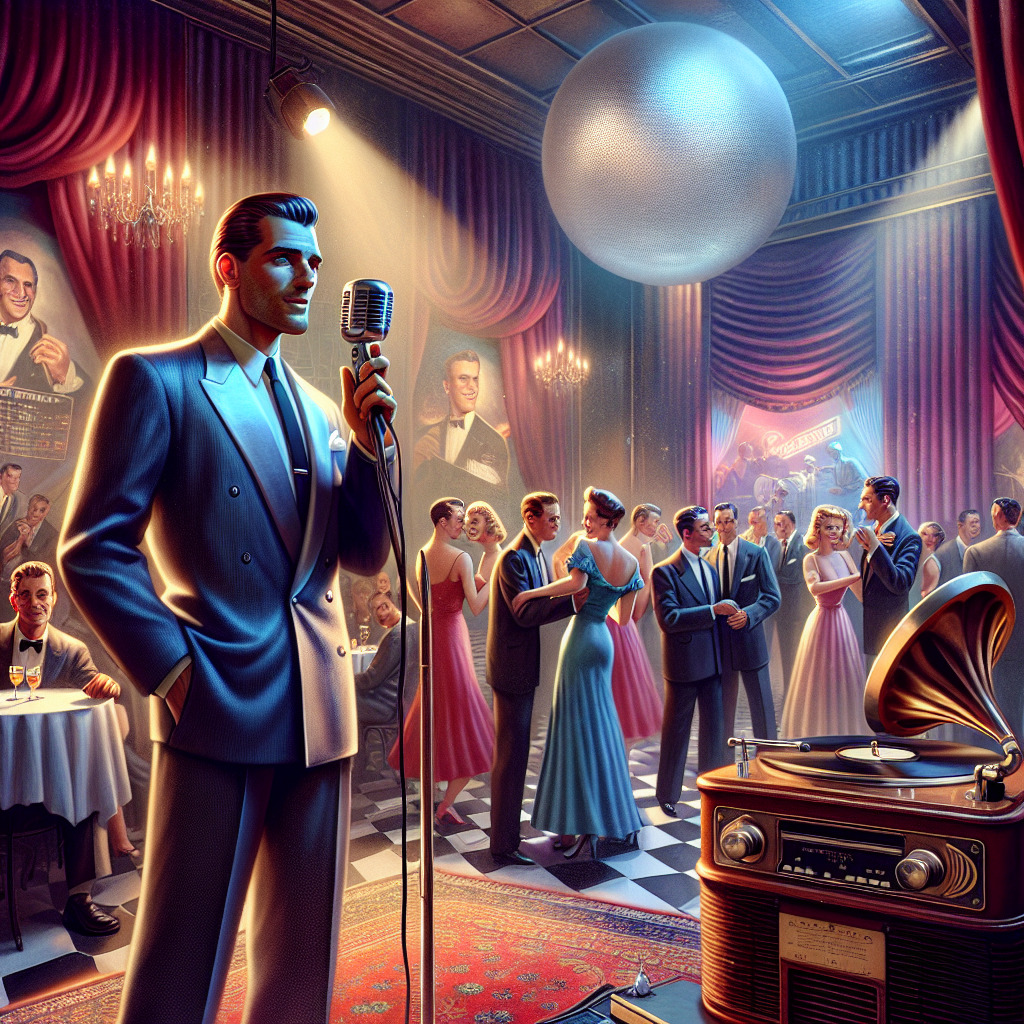 Born on December 12, 1915, Frank Sinatra was a distinguished American singer and actor, who was fondly called the “Chairman of the Board” and “Ol’ Blue Eyes”. Considered one of the most popular entertainers of the mid-20th century, Sinatra enjoyed immense success from his musical pursuits, selling an estimated 150 million records. By the 1960s, he was already widely celebrated for his impactful music, with his fame cementing further after the release of his song, “Fly Me To The Moon” in 1964.
Born on December 12, 1915, Frank Sinatra was a distinguished American singer and actor, who was fondly called the “Chairman of the Board” and “Ol’ Blue Eyes”. Considered one of the most popular entertainers of the mid-20th century, Sinatra enjoyed immense success from his musical pursuits, selling an estimated 150 million records. By the 1960s, he was already widely celebrated for his impactful music, with his fame cementing further after the release of his song, “Fly Me To The Moon” in 1964.
“Fly Me to the Moon”, originally titled “In Other Words”, was written in 1954 by Bart Howard. Sinatra’s version of the song in 1964, however, is what brought the song its renown. This piece was closely associated with the Apollo lunar missions to the Moon, marking it a significant part of American history. The song became so popular that it was honored by the Songwriters Hall of Fame in 1999, and was inducted as a “Towering Song”.
During the period around the song’s release, Sinatra had already established his own record label, Reprise Records, after leaving Capitol Records. His career was thriving, and the success of “Fly Me To The Moon” only served to propel his fame further. The song represented a milestone in Sinatra’s career and a testament to his lasting impact on the music industry.
The song encapsulates the essence of love, taking the listener on a journey where anything seems possible. It is about a lover’s desire to escape the mundane and embark on a journey into the unknown, making it an uplifting love song that beautifully captures the essence of romance and the yearning for new adventures. Sinatra’s soulful voice coupled with the melodious tune made it a timeless classic, adored by people of all ages.
Furthermore, the cultural significance of “Fly Me To The Moon” is deeply tied to the groundbreaking Apollo lunar missions of the 1960s. Astronauts chose this song as part of their playlist for their journey to the moon, making it a unique piece of music that transcended earth and reached into the cosmos. Despite being initially penned as a love song from Howard to his male partner, Thomas Fowler, its popularity soared during a time when homosexuality was criminalized in the United States, marking it not just a musical milestone, but a cultural one as well. The song’s release was not just a defining moment in Sinatra’s career, but also an unforgettable part of our shared history.
An Everlasting Legacy: The Widespread Influence and Cultural Impact of a Timeless Classic
“Soaring Beyond Stratospheres: ‘Fly Me to The Moon’, Sinatra’s Timeless Classic that Echoes Through Music, History, and Culture!”
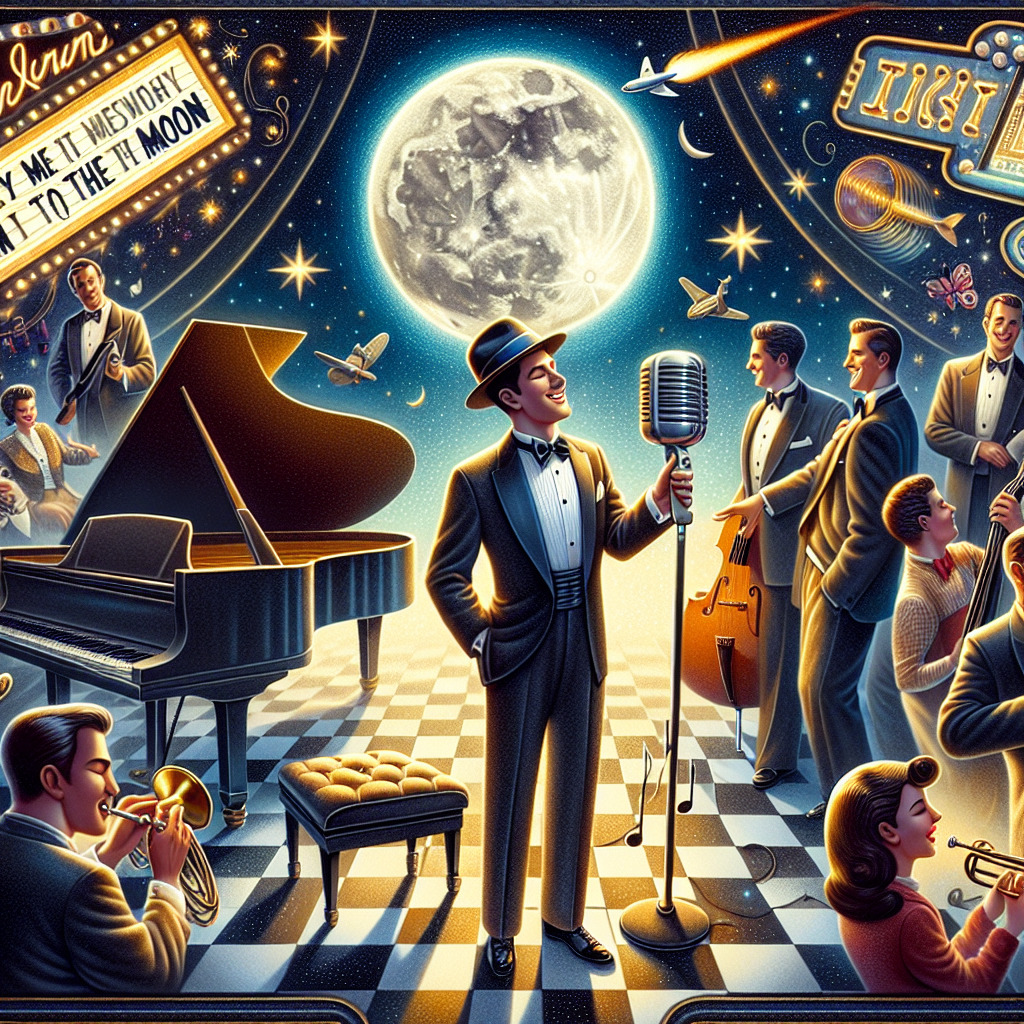 In 1954, Bart Howard graced us with the creation of “Fly Me to The Moon”, a song that, over the years, has soared to heights as high as the celestial body it references. It was Frank Sinatra’s 1964 version, however, that truly took the song to another stratosphere. His rendition is closely associated with the Apollo missions to the Moon, creating a lasting link between this iconic piece of music and a breakthrough moment in human history.
In 1954, Bart Howard graced us with the creation of “Fly Me to The Moon”, a song that, over the years, has soared to heights as high as the celestial body it references. It was Frank Sinatra’s 1964 version, however, that truly took the song to another stratosphere. His rendition is closely associated with the Apollo missions to the Moon, creating a lasting link between this iconic piece of music and a breakthrough moment in human history.
The song was honored in 1999 by the Songwriters Hall of Fame, where it was inducted as a “Towering Song”. This achievement sees “Fly Me to the Moon” standing tall among the most influential and enduring pieces of music in the world.
The influence of this classic Sinatra track goes beyond the realm of music. In the world of animation, the song lent its name to “Fly Me to the Moon”, a 2008 computer-animated film about three adventurous flies who stowaway aboard Apollo 11. Despite mixed reviews, the film serves as a testament to the song’s cultural impact, demonstrating how it continues to inspire creativity across different media.
It’s interesting to note that many renowned artists have tried their hand at covering “Fly Me to the Moon”, adding their own unique spin to this timeless classic. Tony Bennett, Nat King Cole, and Diana Krall are among the notable names that come to mind. However, one cover that particularly stands out is the one delivered by the Welsh crooner, Tom Jones. Famous for his powerful vocals and electrifying stage presence, Jones brought a dynamic charisma to the song that is truly remarkable.
Not to forget, George Strait and Frank Sinatra’s exceptional combo in their rendition of “Fly Me to the Moon”, showcasing a seamless blend of country and swing that brought a new flavor to the melodic classic. And let’s not overlook the jazz world’s queen, Ella Fitzgerald, whose cover added a unique, playful, and jazzy vibe that is hard to forget.
From Sinatra’s enduring standard to these fantastic covers, “Fly Me to the Moon” has proven its versatility and timeless appeal. It’s a song that continues to inspire, evolve, and captivate listeners, demonstrating the magic of music and its ability to transcend time, genre, and boundaries.
Sinatra’s Enchanting Charm: The Power of Live Performances and Quincy Jones’ Magic in ‘Fly Me To The Moon’
“Frank Sinatra’s ‘Fly Me To The Moon’ wasn’t just a song, but a sensory experience. From Sinatra’s captivating stage presence to Quincy Jones’ magical orchestration, it was a timeless showcase of charisma, soulful delivery, and musical brilliance that has left a lasting legacy in American music.”
 In a time when music videos weren’t as prevalent or influential as they are today, the power of Sinatra’s “Fly Me To The Moon” lay more within the audio than the visual. However, one can’t talk about Sinatra’s work without mentioning the timeless charisma and style he brought to his live performances. Whether seen in black and white footage or in color, Sinatra’s smooth movements, his infectious smile, and the twinkle in his eyes were enchanting. His suave demeanor and effortless charm could make audiences feel as if they were indeed being flown to the moon.
In a time when music videos weren’t as prevalent or influential as they are today, the power of Sinatra’s “Fly Me To The Moon” lay more within the audio than the visual. However, one can’t talk about Sinatra’s work without mentioning the timeless charisma and style he brought to his live performances. Whether seen in black and white footage or in color, Sinatra’s smooth movements, his infectious smile, and the twinkle in his eyes were enchanting. His suave demeanor and effortless charm could make audiences feel as if they were indeed being flown to the moon.
Undeniably, Sinatra’s stage presence contributed significantly to the song’s popularity. The song’s reception was overwhelmingly positive, with listeners captivated by Sinatra’s soulful delivery of the romantic lyrics. Critics have praised the song’s arrangement and Sinatra’s interpretation, cementing the song’s place as a classic in American music.
The production of the song and its success cannot be discussed without paying tribute to Quincy Jones, the man behind the scenes. Quincy was the arranger and conductor for Sinatra’s version of “Fly Me To The Moon,” and his skilled orchestration brought a richness to the song that was nothing short of magical.
As for celebrity cameos, a common occurrence in today’s music videos, they were not as common or expected in Sinatra’s time. Instead, Sinatra often shared the stage with other legendary artists such as Ella Fitzgerald, Dean Martin, and Sammy Davis Jr., creating memorable duets and performances.
In conclusion, while a traditional music video as we know it today was not associated with “Fly Me To The Moon,” the visuals of Sinatra’s live performances and the charm he exuded certainly played into the song’s popularity and reception. With Quincy Jones’ expertise in the background, the song was a sonic powerhouse that continues to enchant listeners to this day.
The Phenomenal Journey of a Timeless Classic: Sinatra’s ‘Fly Me to the Moon’
Despite not having the detailed digital metrics that today’s songs can boast of, “Fly Me to the Moon” had its fair share of success that was evident in other tangible ways. Sinatra’s version of the song, included in the 1964 album “It Might As Well Be Swing”, quickly climbed the charts, becoming a beloved tune in the American songbook. While exact sales figures are elusive, the song’s influence is unquestionable, having been covered by countless artists across generations.
In comparison to other songs in the charts at the time, “Fly Me to the Moon” stood out due to Sinatra’s unique vocal stylings and Quincy Jones’s rich orchestral composition. Its popularity was further amplified by frequent radio airplay and Sinatra’s performances on television and live shows. The song quickly became a staple in Sinatra’s performances, helping to further solidify his status as a musical icon.
The marketing and promotional strategy for “Fly Me to the Moon” was less about flashy campaigns and more about leveraging Sinatra’s already established stardom. The real promotional power came from Sinatra’s live performances, where he often included “Fly Me to the Moon” in his setlist. This, along with the song’s association with the Apollo missions, helped cement its place in the public consciousness.
Critics and fans alike received “Fly Me to the Moon” with great enthusiasm. The song’s uplifting melody and romantic lyrics, paired with Sinatra’s signature emotive vocals, struck a chord with listeners. While awards and official accolades for this specific track are hard to trace, the song’s enduring popularity and the numerous covers by renowned artists attest to its critical success.
“Fly Me to the Moon” has left an indelible mark on popular culture. Not only did it become a symbol of the 1960s space race, but the song also became an anthem for dreamers and romantics. Its legacy endures in the countless covers it has spawned across a variety of genres, testifying to its broad appeal and influence.
In the modern digital era, the song continues to thrive. The song’s streams on platforms like Spotify and Apple Music are testimony to its timelessness, while references to it in popular media and viral moments on social media platforms like TikTok or Instagram reaffirm its relevance.
Die-hard Sinatra fans and music enthusiasts often flock to internet forums and social media groups to discuss the song’s impact on Sinatra’s career and its cultural importance. These discussions paint a picture of a song that is much more than just a chart-topping hit; it’s a piece of history that continues to resonate with people.
While we can’t quantify the song’s economic impact with precise numbers, there’s no denying that “Fly Me to The Moon” played a significant role in Sinatra’s illustrious career, contributing to album sales, concert ticket sales, and even Sinatra’s enduring legacy, which continues to generate revenue through streams and merchandise sales. In conclusion, “Fly Me to The Moon” was more than just a song; it was a phenomenon that boosted Sinatra’s career and influenced generations of music.
Let me play among the stars
And let me see what spring is like
On a-Jupiter and Mars
In other words, hold my hand
In other words, baby, kiss me
Fill my heart with song
And let me sing forevermore
You are all I long for
All I worship and adore
In other words, please be true
In other words, I love you
Fill my heart with song
Let me sing forevermore
You are all I long for
All I worship and adore
In other words, please be true
In other words, in other words
I love you
Immersing in Sinatra’s Cosmic Love Tale
“Frank Sinatra’s ‘Fly Me to the Moon’ is a musical voyage of love and ambition. Its timeless themes, personal connection, and rich use of literary devices evoke emotions that transcend generations. A lyrical masterpiece, it remains a timeless classic that continues to captivate audiences with its unique blend of romance, adventure and cosmic imagination.”
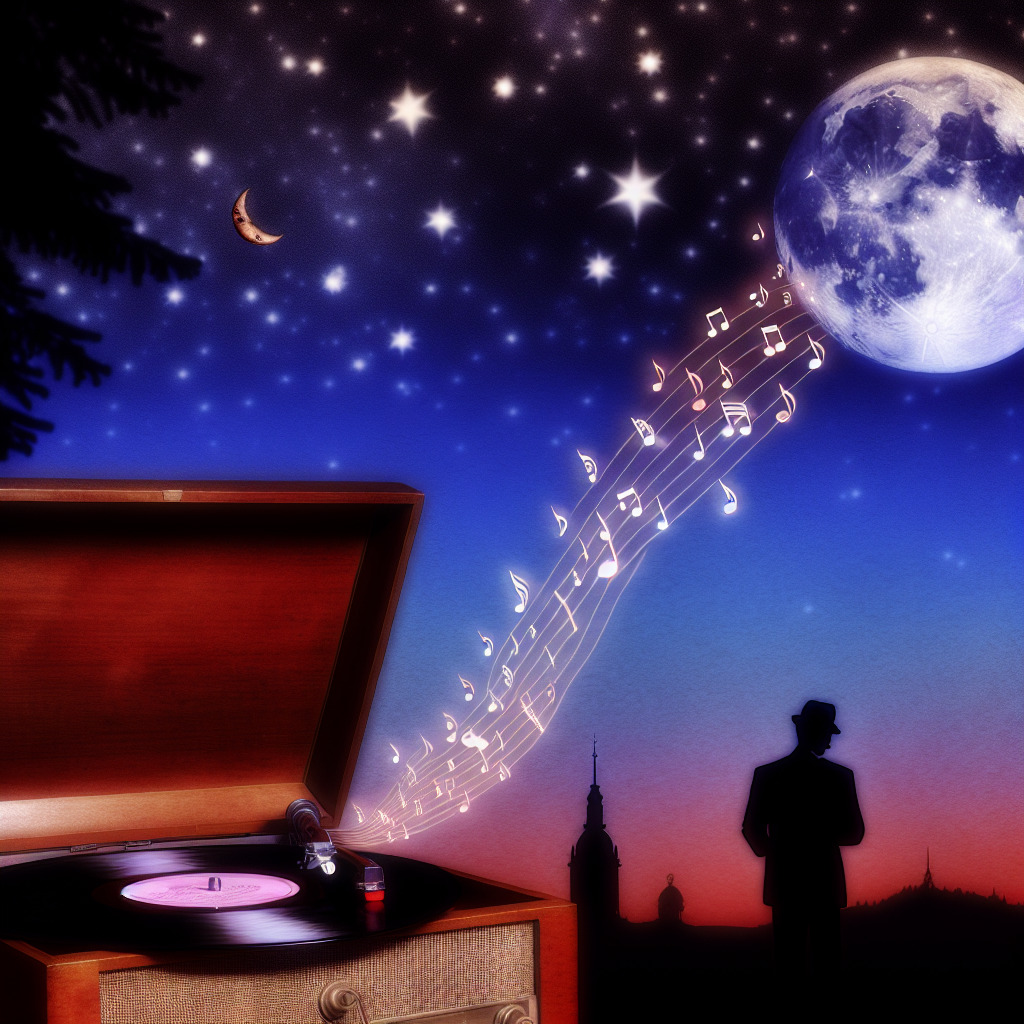 Frank Sinatra’s rendition of “Fly Me to the Moon” is a song that has evoked feelings of romance and adventure for listeners since its release in 1964. The lyrical themes of the song are deeply personal and romantic, resonating with listeners across generations. The lyrics speak of a yearning for love that is as grand and limitless as the universe itself. This theme was particularly moving during the 1960s, when humanity was just beginning to explore the vastness of space, making the song even more poignant and impactful.
Frank Sinatra’s rendition of “Fly Me to the Moon” is a song that has evoked feelings of romance and adventure for listeners since its release in 1964. The lyrical themes of the song are deeply personal and romantic, resonating with listeners across generations. The lyrics speak of a yearning for love that is as grand and limitless as the universe itself. This theme was particularly moving during the 1960s, when humanity was just beginning to explore the vastness of space, making the song even more poignant and impactful.
The lyrics of “Fly Me to the Moon” tell a story of a deep, impassioned longing for an immersive love that transcends the earthly realm. The song is written from a first-person perspective, giving a sense of intimacy and personal connection that makes the listener feel as though they are a part of the story being told. This narrative style greatly contributes to the overall impact and relatability of the song.
Sinatra’s song is a treasure trove of literary devices that enhance its lyrical quality. Metaphors are used extensively, with the moon serving as a metaphor for an extraordinary, otherworldly love. The lyrics also use alliteration in lines such as “Fill my heart with song” and “Let me see what spring is like on Jupiter and Mars,” creating a rhythmic flow that adds to the song’s sonic appeal.
When compared to other songs by Sinatra, “Fly Me to the Moon” stands out for its imaginative, cosmic lyrics and for Sinatra’s soulful, evocative vocal delivery. While many of Sinatra’s songs explore themes of love and longing, this song takes these themes to new heights, literally aiming for the moon.
The song’s lyrics contain cultural references that are both timeless and specific to the era in which the song was released. The line “In other words, I love you” may seem simple, but it carries the weight of a bold and unabashed declaration of love, a sentiment that was both daring and romantic in the 1960s. The song’s association with the Apollo missions also adds a layer of historical and cultural depth to its lyrics.
“Fly Me to the Moon” has a profound emotional impact, eliciting feelings of longing, love, and adventure. Its lyrics are highly relatable, speaking to anyone who has ever been in love or longed for something grand and extraordinary. The song’s success can largely be attributed to this emotional connection and relatability.
The language used in the song’s lyrics is simple yet effective, allowing for a wide range of listeners to connect with the song. There is a notable use of wordplay, with the song’s title serving as a clever pun that encapsulates the song’s theme of love and adventure.
While there have been no significant controversies or misinterpretations surrounding the song’s lyrics, “Fly Me to the Moon” has sparked countless discussions and interpretations, with fans interpreting its lyrics in various ways. Some believe the song is about a love so powerful that it feels as though it could transcend the earth and reach the moon. Others see it as a metaphor for ambition and the desire to achieve great things.
“Fly Me to the Moon” carries a profound influence from the art form of poetry, with its lyrical, metaphor-rich lyrics and evocative imagery. The song’s lyrics have also evolved over time in live performances, with Sinatra sometimes altering the lyrics to convey different emotions or to better connect with his audience.
Overall, “Fly Me to the Moon” is a lyrical masterpiece that has stood the test of time. From its powerful themes of love and adventure to its rich use of literary devices, the song’s lyrics have captivated listeners for decades, solidifying its status as a timeless classic.
A Celestial Journey: Unfolding the Harmonic Voyage of Love and Dreams
“Fly Me To The Moon – a timeless journey through rhythm and lyrics, crafted by Bart Howard and brought to life by Frank Sinatra.”
 “Fly Me To The Moon,” originally titled “In Other Words,” is a captivating melody that has captured hearts worldwide. Written by Bart Howard in 1954 and iconically performed by Frank Sinatra, it masterfully uses music theory and chord progressions to paint a vivid picture of love and dreamy voyages.
“Fly Me To The Moon,” originally titled “In Other Words,” is a captivating melody that has captured hearts worldwide. Written by Bart Howard in 1954 and iconically performed by Frank Sinatra, it masterfully uses music theory and chord progressions to paint a vivid picture of love and dreamy voyages.
Let’s start with the song’s intriguing chord structure. The arrangement is a perfect example of a classic jazz song, displaying an elegant and carefully balanced mixture of major, minor, and dominant seventh chords. These chords create a rich harmonic platform for the melody to dance upon, adding depth to the song and enhancing its romantic sentiment.
The song also utilizes a signature swinging jazz rhythm, typical of Sinatra’s style. This rhythm gives the song its bouncing, light-hearted feel that makes you want to sway along. It’s this rhythmic pattern that propels the song forward, creating an illusion of movement that’s akin to a starry journey through the cosmos.
The lyrics, filled with yearning and a sense of adventure, are framed beautifully by the song’s melody. Through the ebbs and flows of the music, the listener is taken on a journey from the earthly realm to the celestial bodies beyond.
While we don’t have specifics on the song’s key and tempo, one can guess that it’s likely set in a major key, given its upbeat and dreamy feel. As for the tempo, it’s a moderately paced song, allowing listeners to fully appreciate its melodic and harmonic nuances. It’s important to note that the exact key and tempo of “Fly Me To The Moon” by Frank Sinatra are proving elusive to confirm, despite extensive online searches. The song appears to open in C major, indicating that it may be in the key of C, but this is an educated guess rather than a confirmed fact. The tempo remains unclear from the information available online. This highlights the fluid nature of music and the personal touches each artist brings to a song, further enriching the narrative of our piece.
So there you have it – a journey through the musical cosmos of “Fly Me To The Moon.” As you listen, let the chords carry you across the stars and let the swing of the rhythm guide your celestial dance. And remember, whether in music or life, it’s all about the journey, not the destination.
The composer of “Fly Me To The Moon,” Bart Howard, was born with the name Howard Joseph Gustafson on June 1, 1915. Howard was an American composer and songwriter, best known for writing the jazz standard “Fly Me to the Moon.” Over the years, his song has been performed by a multitude of artists, attesting to its universal appeal and timeless quality. The song was originally written for his partner of 58 years, Thomas Fowler, adding a deeply personal layer to the song’s creation.
In terms of musical style and influences, Howard was a part of the jazz era and his compositions often reflected this. “Fly Me To The Moon” is a quintessential jazz standard, with its swinging rhythm, soulful melody, and rich harmonic structure. It encapsulates the essence of the genre while still maintaining a timeless appeal, a testament to Howard’s skill as a composer.
Howard worked with a number of artists throughout his career, creating collaborations that helped to shape the sound and success of his music. His song “Fly Me To The Moon” has been performed by numerous artists such as Kaye Ballard, Judy Garland, Frank Sinatra, Tony Bennett, Ella Fitzgerald, and Nat King Cole, among others. The song’s constant reinterpretation by various artists showcases the versatility of Howard’s composition and its ability to transcend genres and generations.
When it comes to the creation of “Fly Me To The Moon,” Howard’s role was pivotal. He not only composed the music for the song but also wrote the lyrics. His composition contributed to the overall feel and success of the track, with its unique blend of jazz elements, romantic lyrics, and memorable melody. His choice to write the song for his partner, Thomas Fowler, adds an additional layer of depth to the song, showcasing the profound personal emotion behind its creation.
The lyrics of “Fly Me To The Moon” beautifully complement the music, creating a perfect harmony between words and melody. Howard’s lyrical genius is evident in the way he uses language and imagery to convey a sense of yearning and romantic adventure. The music serves to enhance this narrative, elevating the lyrics and adding depth to the song’s story.
In terms of the song’s success, there’s no denying Howard’s significant contribution. His composition played a key role in the song’s reception and enduring popularity. The song’s induction as a ‘Towering Song’ by the Songwriters Hall of Fame in 1999 is a testament to Howard’s impact and the lasting legacy of his work.
“Fly Me To The Moon” stands as a significant work in Howard’s repertoire. While he composed and wrote hundreds of songs throughout his career, this song remains one of his most iconic and celebrated works. The song’s enduring popularity and widespread cover versions attest to Howard’s skill and influence as a composer.
The critical reception of Howard’s work on “Fly Me To The Moon” was overwhelmingly positive. His composition was praised for its elegant melody, evocative lyrics, and timeless appeal. Throughout his career, Howard received many accolades for his work, solidifying his reputation as a talented and influential composer.
Unfortunately, there are no known personal reflections of Howard on “Fly Me To The Moon.” Nevertheless, the fact that he wrote the song for his partner offers unique insight into the personal emotions and experiences that shaped the song’s creation.
When it comes to legacy and influence, Bart Howard has undoubtedly left his mark on the music industry. His compositions, particularly “Fly Me to the Moon,” have shaped the genre of jazz and continue to resonate with audiences. The song’s enduring popularity and influence are a testament to Howard’s talent and vision, ensuring his legacy will continue to live on in the music world.
? Celebrating #FrankSinatra’s ‘Fly Me to the Moon’ ?? – a melodious odyssey that transcended music, touching hearts and reaching the stars. From Sinatra’s soulful voice to its link with the Apollo missions, this song is not just a tune, but a journey of love, dreams, and cultural milestones. A true testament to the power of music in shaping history. #TimelessClassic #MusicLegacy #SinatraMagic ??





